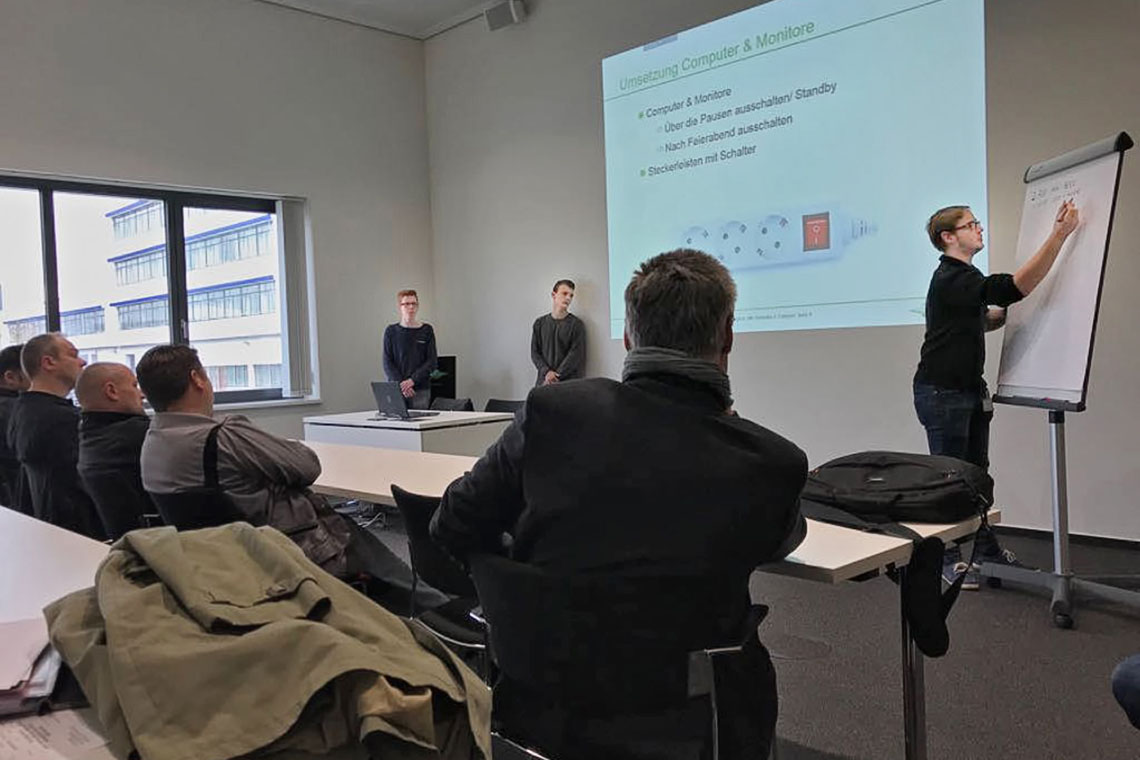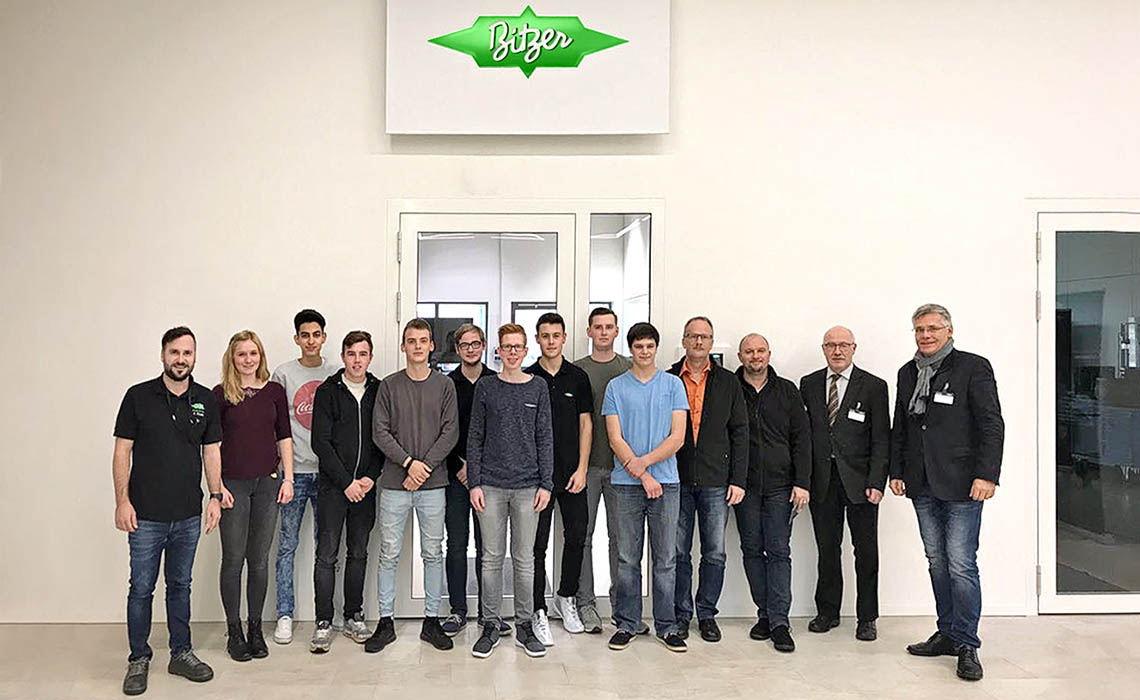The first two days of the seminar focused on energy technology, energy efficiency and energetic stocktaking. ‘Once the principles had been worked out, the trainees turned their attention to concrete topics in three groups,’ says Alexander Pixaras, instructor at BITZER. ‘Special attention was paid to outdoor lighting and insulation at the Rottenburg-Ergenzingen factory as well as energy consumption and the lighting inside the high-bay warehouse, among other things. At the end of the course, all three groups presented their recommendations for improvement.’
Energy savings for outdoor lighting and refrigerators
‘The results revealed that just replacing the outdoor lighting at the Rottenburg-Ergenzingen factory with LED lights would save around €1,190 a year,’ says Yunus Siyah, trainee in the third year of apprenticeship. ‘The investment therefore pays for itself in around one and a half years.’ With an assumed service life of around seven years for the LED lights, we would see reductions of around 52,500 kWh and 9,450 kg CO2 during this time. If BITZER were also to switch from 180-watt refrigerators to modern refrigerators with a consumption of 70 watts, it would reduce the costs per unit by another €150 a year.

Ventilation system insulation and standby mode
With thermal images and sensors, the trainees were also able to determine how much energy is lost at the Rottenburg-Ergenzingen factory. Their findings: at a room temperature of 22°C, the hall loses approximately 14,700 kWh per gate each year. For the purpose of their calculations, the trainees assumed that each gate was left open on average for one hour.
‘To reduce heat loss when closed, we recommended silicone drop-down door and gate bottom seals,’ says Marcel Traub, trainee in the second year of apprenticeship. ‘We also discovered that every computer that’s left on and not used for eight hours a day consumes around €17 of electricity a year. Employees should therefore be sure to turn their computers and monitors off during breaks and after work, rather than leaving them in standby mode.’
‘Just replacing the outdoor lightning at the Rottenburg-Ergenzingen factory with energy-saving LED lights saves around €1,190 a year.’
Colin Klett
Trainee in the third year of apprenticeship
Efficient lighting in the high-bay warehouse
Examining the high-bay warehouse revealed that using LEDs rather than the current fluorescent tubes can reduce costs by €1,600 per year. ‘And that only requires a one-time investment of around €400,’ explains Alina Braun, trainee in the third year of apprenticeship. ‘With average use of 4,000 hours each year, the LED lamps have a service life of around seven and a half years, and the fluorescent tubes just under 15 months.’ Replacing them is well worthwhile, as the investment paid for itself in just three months. The LED lights reduce consumption by around 77,000 kWh over a period of seven and a half years.
‘With their ideas, our trainees make a valuable contribution to ensuring we are progressive and sustainable and to constructively questioning the status quo in line with the BITZER company values,’ adds Martin Frädrich, training manager of BITZER.
When you play the video, you transmit data to YouTube. For more information, see Data Protection


